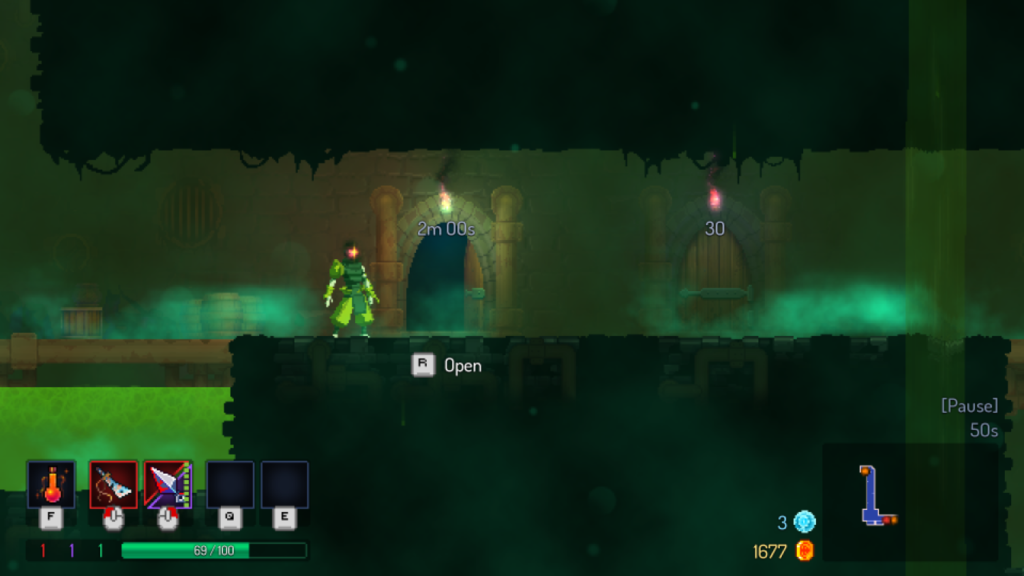Looking at the genres of roguelikes and rogue-lites, one of the first features to stand out is the randomization of maps and enemies. From this, one might posit that the replay value of a roguelike stems from the unique structures you encounter on your way through, however after playing Dead Cells (2017) I found that the opposite seemed true. Once you’ve experienced a map a few times, the randomization alone doesn’t provide any unique challenges.
For instance, looking at the enemy spawning of Dead Cells, I noticed quite quickly that the majority of the enemies in the first few stages share a handful of traits, which makes it fairly easy to deal with most of their formations in the exact same fashion. The enemies aren’t aware of your presence if you’re on the floor below them, they’re unable to leave their y-plane, and they roam back and forth along their x-plane. Because of this, it’s easy to clear almost any enemy formation in the first few stages without being hit, simply by waiting at a different height for the enemy to approach then jumping in and attacking repeatedly to stun-lock them. Within the stages I was able to reach, I found that this and a few other strategies could deal with every enemy formation. The map formation felt similar, in that the new map formations didn’t seem to provide new or unique challenges from run to run, but simply meant that you didn’t know where the exit to the stage was.
Though these two pieces of randomness are the most prevalent, being immediately visible from the first few steps of each run, I found that the features that gave me the most interesting and varied play were the ones that were kept constant.
At the end of each level of a run, you find The Collector’s Room, an area that lets you make upgrades, use blueprints, and heal. However, what I found most interesting in it were the challenge doors, doors that only unlock if you either killed a certain number of enemies without being hit or completed the level within a specific time limit. After reaching this area a few times, I decided to go for the time door to see if it was any different, and this was when the game started to become more interesting.

Enemy patterns that could be handled virtually identically at a more measured pace now had more obvious differences in how they could be handled. The zombies that could be easily dispatched before now had to be rushed down as they prepared to leap forward. Archers now posed an actual threat as they could shoot me while I was dealing with other opponents. The combination of protectors encouraged me to simply skip over enemies without fighting them, while runners and bats chased me down if I chose to do so. The reduced exploration led to less equipment and upgrades, while the riskier playstyle led to me taking more hits to the health pool I had, and this in turn forced me to face fights or platforming challenges differently trying to find a middle ground between speed and damage. Every run of every map was giving me new challenges and forcing me to adopt new strategies, making repeatedly playing the same section of the game feel fun.
All this occurred not because of the game’s randomness, but because of the way the game encourages emergent gameplay. The fact that these aren’t randomized plays an important part in encouraging players to make these changes, as it reassures them that they can experiment as much as they want with the decision. Additionally, the fact that this is a binary choice means it won’t overwhelm the player with options, so it won’t be too time consuming or intimidating to try out the different options and see how they affect gameplay and enjoyment.
This and other fixed binary decisions in the game, such as the choice of which biome to go to second in a run or the choice between taking the bow and the shield, help encourage an emergent gameplay experience that allows the player to take advantage of the game’s randomness. I believe this encouragement of emergent gameplay is even more instrumental to the endless replay value roguelikes and rogue-lites are known for than pure randomness of map generation.
